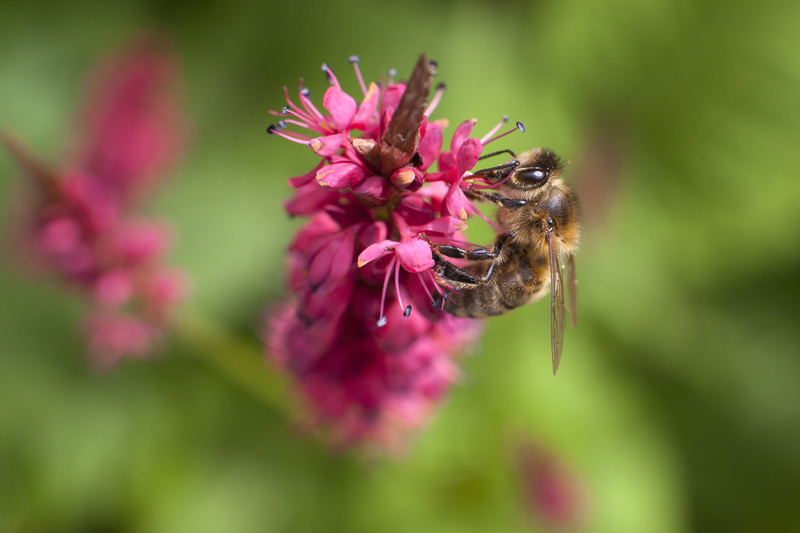Where to Begin When Transforming Your Neglected Garden
Posted on 12/06/2025
Where to Begin When Transforming Your Neglected Garden
Does your outdoor space feel more like a jungle than a sanctuary? If your garden has been neglected and you don't know where to start, you're not alone. Many homeowners find themselves staring at overgrown lawns, lifeless flower beds, and weeds running riot. Transforming an abandoned garden may seem overwhelming, but with the right approach, you can breathe new life into your backyard.
In this comprehensive guide, we'll share actionable steps on where to begin when transforming your neglected garden. You'll learn tips and tricks for clearing the mess, planning your new garden design, choosing plants, and ongoing care -- all optimized for Google and written with real-world gardening insights.
Why Transforming a Neglected Garden Matters
Before diving into action, it's important to recognize the benefits of reclaiming your outdoor space:
- Boost Property Value: A beautiful garden can increase your home's curb appeal and market price.
- Enhance Wellbeing: Exposure to green spaces is proven to reduce stress and promote happiness.
- Environmental Benefits: Well-maintained gardens support wildlife, pollinators, and improve air quality.
- Personal Satisfaction: There's nothing quite like relaxing or entertaining in a garden you've revitalized yourself.
Let's explore the first steps to revive your neglected garden, ensuring your efforts result in a thriving, personalized outdoor paradise.

Step 1: Assess Your Overgrown Garden
Survey the Site
The foundation of a successful garden transformation is a thorough site assessment. Take some time to walk through your garden with a notepad, noting the following:
- Current Structures: Fences, patios, paths, sheds, ponds -- what's worth keeping, repairing, or replacing?
- Problem Areas: Identify severely overgrown spots, invasive weeds, dead plants, or pest-infested sections.
- Light, Shade & Drainage: Observe sunlight patterns, shady areas, and spots that often become soggy.
Tip: Take "before" photos for motivation and reference as you progress.
Identify Existing Plants
Some neglected gardens hide mature gems beneath the weeds, like heritage roses or established shrubs. Make a list of any healthy or cherished plants to preserve during the cleanup process.
Step 2: Clear the Ground -- Taming the Wilderness
Cleaning up is the most labor-intensive step, but it's incredibly rewarding. Here's how to tackle it:
Gather the Right Tools
- Sturdy gloves, secateurs/pruners, hand trowel, spade, rake, loppers, and a wheelbarrow/bin for debris.
- Lawn mower or strimmer for tall grass.
- Weed suppressant membrane (optional) for particularly wild areas.
Declutter and Remove Debris
- Pick Up Trash: Remove old pots, plastics, broken tools, and forgotten items cluttering the space.
- Clear Large Weeds and Brambles: Start with the biggest offenders. Cut back brambles and dig up roots where possible.
- Trim Overgrown Hedges: Prune back unruly shrubs and trees, taking care not to destroy healthy growth.
Mow and Edge the Lawn
Once debris is gone, mow the lawn at a higher setting to avoid scalping. Define and edge boundaries for a tidy look even before planting anything new.
Step 3: Weeding and Soil Preparation
Eradicate Weeds Thoroughly
- Pull out weeds by hand, using a fork or trowel to extract roots and prevent regrowth.
- For persistent invaders, consider using eco-friendly weedkillers or laying down weed barrier fabric.
Restore and Improve the Soil
After clearing, your soil may be compacted or depleted. To rejuvenate:
- Add organic matter such as compost, well-rotted manure, or leaf mold.
- Turn the soil gently with a fork (especially in planting beds).
- Test your soil pH to determine if further amendments are needed for certain plant types.
Healthy soil is the secret to a lush, productive garden. Don't skip this step!
Step 4: Planning Your New Garden Design
With a clear space, it's exciting to imagine all the possibilities! Planning is crucial so you don't waste time, effort, or money as you revamp your neglected backyard.
Sketch a Basic Layout
- Draw a rough map based on your earlier site survey.
- Mark permanent features (shed, patio, trees) and areas available for flower beds, veggie patches, or lawn.
- Decide on zones - relaxing, dining, playing, or planting areas.
Consider Your Lifestyle & Budget
- If you want low-maintenance, opt for hardy perennials, gravel gardens, or artificial turf.
- On a tight budget? Upcycle containers, start with seeds or cuttings, and focus on essential projects first.
- Families may prioritize space for kids or pets to play.
Pinspiration & Mood Boards
Use Pinterest or gardening magazines for inspiration. Save images of gardens you love to help shape the mood, color palette, and style of your revitalized space.
Step 5: Selecting Plants for Transformation
Plant choice is the heart of your garden revival. Focus on the following principles:
Right Plant, Right Place
- Sun Lovers: Roses, lavender, salvia, and most vegetables thrive in full sun.
- Shade Tolerant: Hostas, ferns, hydrangeas, and certain spring bulbs brighten darker corners.
- Drought-Resistant: Mediterranean herbs (rosemary, thyme), sedums, and ornamental grasses for dry spots.
- Check plant tags for height, spread, and care needs.
Bring in Year-Round Interest
Avoid the common trap of all blooms in spring and nothing in winter. Mix plants for continuous color and texture:
- Evergreen shrubs for backbone structure.
- Spring and summer flowering perennials.
- Autumn foliage color (Japanese acers, cotinus).
- Winter interest: Cornus stems, hellebores, mahonia.
Don't Forget Containers
Decorative pots offer flexibility and instant impact -- perfect for renters or patios. Use seasonal bedding, herbs, or dwarf trees for changing displays.
Step 6: Hard Landscaping and Features
Repair or Replace Garden Structures
- Fix leaking sheds or broken fences; a fresh coat of paint works wonders.
- Pressure-wash patios and clean decking for safe, attractive surfaces.
- Repair or relay paths for safe, stylish garden journeys.
Add New Features
- Consider a small wildlife pond for pollinators and birds.
- Add raised beds for vegetables, or create a seating nook for relaxation.
- Outdoor lighting extends enjoyment into evenings.
Feature focal points like sculptures, water features, or statement planters underline the transformation.
Step 7: Planting and Mulching
How to Plant Successfully
- Soak plants before planting and gently tease out roots.
- Dig holes twice as wide as root balls, mix in compost, and firm plants in.
- Water thoroughly after planting and during dry spells (especially in year one).
Mulching Benefits
- Suppresses new weeds.
- Retains moisture and enhances soil structure.
- Improves appearance with a neat, unified look.
Organic mulches like bark, wood chip, or compost are nutrient-rich and eco-friendly.
Step 8: Ongoing Care for Your Rejuvenated Garden
Maintenance Checklists
- Weekly: Water pots, mow lawns, remove obvious weeds.
- Monthly: Trim hedges, deadhead spent flowers, feed needy plants.
- Seasonal: Mulch in spring/autumn, prune shrubs and trees as required, plant bulbs or new perennials.
Encourage Biodiversity
- Add a bug hotel, bird feeders, or hedgehog houses for a wildlife-friendly retreat.
- Grow a mix of flowering species to attract pollinators and beneficial insects.
Common Mistakes When Transforming a Neglected Garden
- Doing too much at once: Break work into manageable phases so you don't burn out.
- Ignoring the soil: Healthy plants start with healthy soil -- always amend poor earth.
- Overplanting: Allow room for growth; overcrowding leads to disease and unhappy plants.
- Neglecting maintenance: Little and often beats once-a-year panic gardening!

Gardening on a Budget: Transform Without Breaking the Bank
Upgrading a garden doesn't have to mean expensive landscaping. Here are budget-friendly tips:
- Borrow or rent tools rather than buying new.
- Divide and share perennials with friends.
- Collect seeds or take cuttings from existing healthy plants.
- Repurpose household items as plant containers.
Community plant swaps and online freebies can supply surprisingly good plants for free or low cost.
Final Thoughts: Your Garden Transformation Journey
Transforming a neglected garden isn't a weekend project. It's a satisfying, ongoing process that can radically improve your home and lifestyle. Begin by assessing and clearing your site, then plan, plant, and enjoy as your outdoor space flourishes. Whether you dream of a family-friendly retreat, a wildlife haven, or low-maintenance contemporary borders, every garden can be revived with patience and love.
Now you know where to begin when transforming your neglected garden, why not start today? Take that first step, and watch your forgotten plot blossom into a source of joy for years to come.
Frequently Asked Questions
- How long does it take to transform a neglected garden?
Depending on your garden's size and current state, initial clearing and transformation can take anywhere from a few weekends to several months. Consistent effort yields the best (and longest-lasting) results. - Can I revive a garden without professional help?
Absolutely! Many gardeners tackle neglected plots themselves, especially with DIY resources and online advice. However, for landscaping, tree surgery, or patio work, professionals can help with complex tasks. - What time of year is best to start?
Spring and early autumn are ideal for new planting, but cleanup and planning can happen anytime. Avoid big changes in freezing cold or drought conditions.
Ready to begin your garden revival? Share your progress and questions in the comments below!



